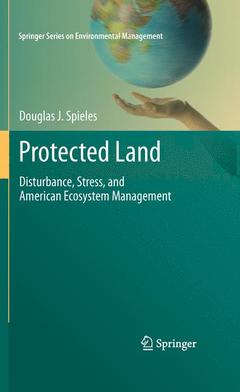Description
Protected Land, 2010
Disturbance, Stress, and American Ecosystem Management
Springer Series on Environmental Management Series
Language: English
Subjects for Protected Land:
Keywords
166 p. · 15.5x23.5 cm · Paperback
Description
/li>Contents
/li>Comment
/li>
Preface.- Four Ecosystems, Four Questions; Oak Openings, Ohio; Kissimmee River, Florida; Tallgrass Prairie, Kansas; Six Rivers National Forest, California; Four Questions.- Part 1: Ecosystems in Theory.- The Ecosystem Idea and Ideal; Preservation, Conservation, and Ecology; Gleason and Individualism; Leopoldian Preservation and Conservation; Hutchinson, Holism, and Individualism; The New Ecology; Preservation of the Ideal; Toward an Ecosystem Approach to Management.- A Thing is Right; The Adaptive Cycle; Diversity, Stability, Health and Integrity.- Disturbance, Stress, and Resilience; Disturbance; Resilience; Complications of Stress.- Invasion; Colonization and Succession; Factors of Colonization; Nonnative Invaders; Passengers and Drivers; Ecosystem Function and Service; Ecosystem Service and Invasion; Eradication; A Conservation Dilemma.- Part 2: Ecosystems in Practice.- Very Small Ecosystems; Microbial Ecosystems; Biofilms as Model Ecosystems; Biofilms as Patches; Micro- and Macro-Ecosystems.- Forested Ecosystems; The Forest Sanctuary; The Monongahela Experiment; Wilderness Management; Healthy Forests; Unmanaged Forest Succession.- Grassland Ecosystems.- Grasslands, Short and Tall; Prairie Restoration and Umbrella Species; Land Trust Grasslands.- Freshwater Ecosystems; Wetlands; Lakes; Rivers.- Saltwater Ecosystems; Intertidal Ecosystems; Subtidal Ecosystems; Deeper Water.- Protecting the Shifting Quilt; Holism, Strong and Weak; The Four Horsemen Revisited; Along the Continuum; Protecting the Shifting Quilt.- Index.
These books may interest you

Global Climate and Ecosystem Change 158.24 €



